‘Mercurey’ Rising: Four Producers Soar in Another Côte Chalonnaise Hidden Gem With Red and White (5-Red & 3-White Sampler $399)
Join us for Saturday Sips
Come as you are; come any time that’s convenient for you during our business hours to sample selection from this week’s selections. Our staff will be on hand to discuss nuances of the wines, the terroirs reflected, and the producers.
This week, we continue our trek through Burgundy’s ‘fringe’ appellations, moving southward to Mercurey, just below Rully, where the vineyards festoon marl-limestone hillsides that formed in the Upper and Middle Jurassic period. The soils of Mercurey are ideally constructed as an ideal environment for Pinot Noir and the red wines of this region are prized for their complexity and ability to age. Chardonnay-based Mercurey are more rare and much sought out; there are small pockets of terroir in Mercurey that are structured like the best vineyards of the Côte de Beaune.
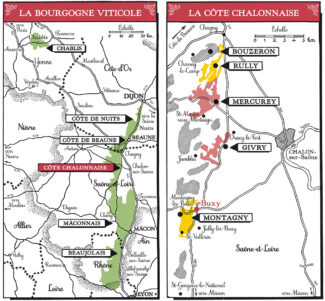
The package contains eight bottles, both white and red; an ode to the diversity of Mercurey—an appellation that offers among the widest range of expressions in Burgundy.
Exploring Burgundy’s Periphery: Mercurey
Shaped like a vast amphitheater, the vineyards of Mercurey owe their terroir to the hundreds of millions of years they spent submerged beneath a prehistoric sea. Marine sediment gradually built up, forming clay, marl and finally, limestone. This geological diversity has paired with a variety of exposures and altitudes to create a remarkable cradle for wine: Mercurey is the most important appellation in Côte Chalonnaise by far.
The appellation, created in 1936, covers the wines of Mercurey itself plus those of neighboring Saint-Martin-sous-Montaigu. Mercurey is the most prolific of the five Chalonnaise communal appellations, producing more wine than its neighbors Rully and Givry combined. This large output comes from a dense patchwork of vineyards covering around 1600 acres of rolling limestone hillsides. Around a quarter of these vineyards are classified as Premier Cru, accounting for 32 officially recognized and delimited climats; wines from these sites may append their vineyard names to the Mercurey Premier Cru appellation title.
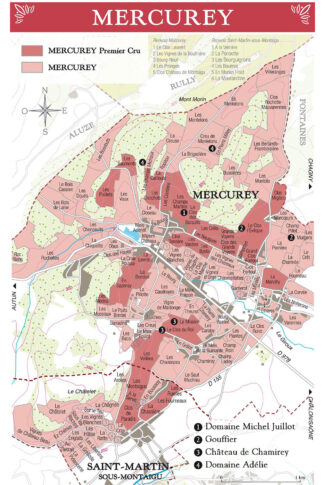
Beating The Heat
2020: Healthy and Ripe, Surprising Levels of Freshness
François Labet, a négociant whose family has lived in Beaune for 300 years, summarizes the 2020 vintage like this: “An intellectually-challenging vintage; the reds in particular defy easy categorization because the impact of that season varied considerably by terroir. Producers had key decisions to make, especially when to pick and that significantly affected both the style and quality of the resulting wines.
And this is because the most notable feature of this vintage was its early and rapid harvest: Many domains began picking the week of August 17th and while August harvests have been frequent in the 21st century (there were none in the prior century), this was for many domains the first time they had not only started, but completed a harvest before the end of August.
The resulting wines (particularly from earlier harvests where sugars were high and acids intact) are remarkable, both for whites and reds. The season was hot and dry, but water tables were healthy from the mild and wet preceding winter.
Beaune and Côte Chalonnaise were particularly fortunate and Chef de Cave Frédéric Weber (Bouchard Père et Fils) describes 2020 as a concentrated and strong vintage: “It reminds me of 2016 for its vibrancy and energy; the wines are voluptuous and structured. A great vintage for the future, like the ‘18s.”
Domaine Michel Juillot
The vineyards of Domaine Michel Juillot spread across the Côte Chalonnaise and Côte de Beaune and include 50 acres of Pinot Noir and twenty-five of Chardonnay. Of the sites, located in twenty individual appellations, half are Premier Cru.
Says fourth-generation winemaker Laurent Juillot: “Between our parcels, we do not differentiate the care we provide. We are convinced that our added value is in the terroir alone. The difference between a Premier Cru, a Village or a Bourgogne generic wine comes from the soil, the earth, the sun and the grape in its environment. We respect them all equally and treat them accordingly.”
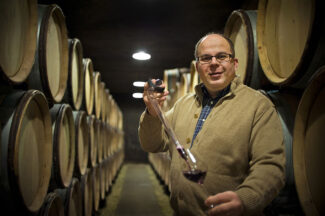
Laurent Juillot, Domaine Michel Juillot
Laurent is the grandson of Michel Juillot, and it was with the elder Juillot’s blessing that the estate, under Laurent’s direction, began to move toward sustainable agriculture. As a true gauge of quality, he ferments on native yeasts alone, as he believes that this is the only way to faithfully transcribe into a single-parcel cuvée the true expression of that unique climat. Current production is 180,000 bottles.
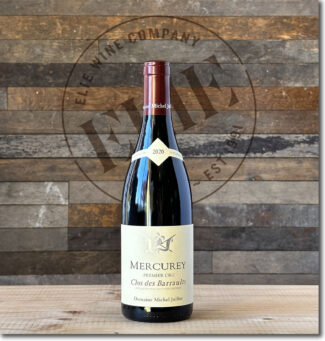 Domaine Michel Juillot, 2020 Mercurey Premier Cru Clos des Barraults Rouge ($53)
Domaine Michel Juillot, 2020 Mercurey Premier Cru Clos des Barraults Rouge ($53)
Michel Juillot has the largest holding in Clos des Barraults and produces the most well-known Pinot Noir bottling from the site. The wine spends 18 months in oak barrels specifically built for Juillot, 30% of them new, which allows a soft wood undertone to follow the palate through raspberry jelly, spicy Morello cherry and a pleasant leatheriness that arises from the integrated tannins.
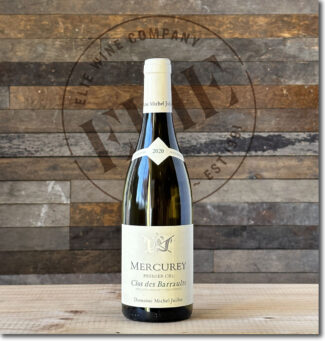 Domaine Michel Juillot, 2020 Mercurey Premier Cru Clos des Barraults Blanc ($53)
Domaine Michel Juillot, 2020 Mercurey Premier Cru Clos des Barraults Blanc ($53)
Clos des Barraults is a 12-acre climat, one of several Premier Crus lining the south-facing hill above the village of Mercurey. Barraults terroir is a classic Burgundian blend of clay, limestone and marl with a high proportion of lightly-colored gravel and pebbles. The southern exposure ensures good ripening with prolonged exposure to the softer morning sun. The wine is 100% Chardonnay and similarly soft, with vanilla-crème behind tropical fruit and bright, plucky acidity.
Gouffier
Frédéric Gueugneau may be seen as an archetype in the new blood that has infused Mercurey over the past decade. As a young man in the village of Fontaines (which sits between Mercurey and Rully) he was a laborer in the vineyards of Gouffier, which consisted of thirteen acres spread across eight appellations. Then under the direction of Jérôme Gouffier, the estate had been in the same family for two centuries.
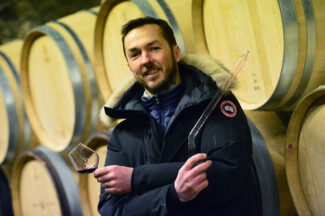
Frédéric Gueugneau, Gouffier
In 2011, upon the death of Gouffier, Gueugneau was asked by his neighbors to take over the day-to-day management of the estate, bringing with him the eight years of experience he’d gained at La Chabliesienne, a wine cooperative in Chablis. He began by reinvigorating the farming philosophy, introducing organic practices; along with his partner Benoît Pagot, Gueugneau brought fresh thinking to the vines and to Gouffier itself—a picturesque estate that finds focus in a stunning, stone-domed cellar that once served as a bunker in the time of Napoleon.
Another unique feature of Gouffier is its close alliance with a single cooper. Doreau Tonneliers of Cognac is instrumental in finding the perfect match between barrel and wine, and in fact, nearly 20% of the wood used to make the barrels used by Gueugneau and Pagot comes from the forest just beyond the property’s walls.
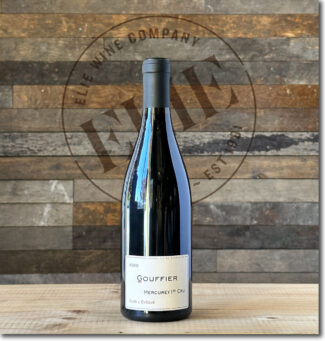 Gouffier, 2020 Mercurey Premier Cru Clos l’Evêque Rouge ($49)
Gouffier, 2020 Mercurey Premier Cru Clos l’Evêque Rouge ($49)
In English, Évêque means Bishop and this Premier Cru climat once belonged to the Bishopric of Chalon-sur-Saône. The site is situated in the Mercurey fault-line at an elevation reaching one thousand feet. The wine is elegant, tinged with notes of cherry pit and forest floor underscored by wild bramble berries and finishing lean, dry and chalky.
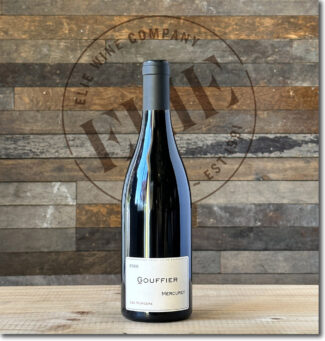 Gouffier, 2020 Mercurey Les Murgers ($41)
Gouffier, 2020 Mercurey Les Murgers ($41)
‘Murgers’ refers to the stones that were removed from the plot to enable vine planting; Gouffier’s three-acre, east-facing plot is rich in loamy topsoil with deeper layers of clay that relies on deeper rocks to supply adequate drainage. Vines are pruned according to the Guyot Poussard method, which takes sap flow into account and reduces the damage that pruning may cause. The wine’s forward bouquet of cherries and raspberries are touched with sweet soil tones and subtle hints of smoke girded by silky tannins and integrated acidity.
Château de Chamirey
In 1934, the Marquis de Jouennes began to bottle the wines of Château de Chamirey at the domain; when his son-in-law Bertrand Devillard took over, he expanded the holdings to the present size and today, Amaury and Aurore Devillard stand proudly as the fifth generation of the family to manage the estate.
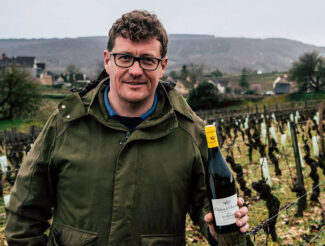
Enrico Peyron, Winemaker at Château de Chamirey
Of the 95 acres that encompass de Chamirey’s vineyards, about 70 are dedicated to Pinot Noir and the rest to Chardonnay; of the total, 21 acres are Premier Cru and about eight represent the acres for which de Chamirey is best known, Monopole wines, including those of Clos du Roi and La Mission. The peculiarly Burgundian term ‘Monopole’ dates back to Napoleonic inheritance laws that saw properties so subdivided (even down to individual rows of vines) that a lone grower was often not able to provide commercial grape quantities to négociants. A ‘Monopole’ wine represents a single area, often a lieu-dit vineyard, controlled by a single winery.
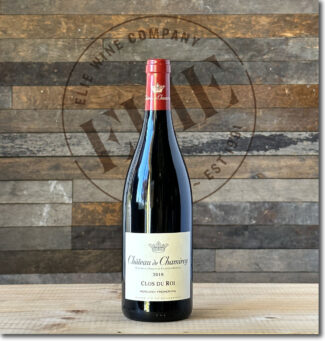 Château de Chamirey, 2020 Mercurey Premier Cru Clos du Roi Rouge ($52)
Château de Chamirey, 2020 Mercurey Premier Cru Clos du Roi Rouge ($52)
To elicit the maximum extraction of color and phenolics, the Pinot Noir is held pre-fermentation between 4 and 6 days, following which a full two week maceration concentrates tannins and aromatics. Clos du Roi is a southwest-facing, concave slope divided into 4 adjacent plots for a total of 7.6 acres planted between 1970 and 2002. The nose shows expressive strawberry and raspberry notes behind pie spices (cinnamon and nutmeg); the palate is cherries, plums, cassis, licorice and candied citrus peel.
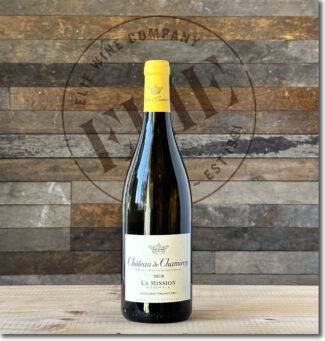 Château de Chamirey, 2020 Mercurey Premier Cru La Mission ‘Monopole’ Blanc ($54)
Château de Chamirey, 2020 Mercurey Premier Cru La Mission ‘Monopole’ Blanc ($54)
La Mission is composed of three small plots totaling 4.75 acres and owned at 100% by Château de Chamirey; vines were planted between 1961 and 1997. Fermentation and aging take place in traditional Burgundian 228-liter barrels (15% of new) from the Allier and Vosges forests. The wine spends three months in tanks and goes through a light filtration before bottling; it shows a rich, rounded, golden character and carries the oak influence well.
Domaine Adélie
Domaine Adélie, comprising 20 acres of various Mercurey lieu-dits (including the Premier Cru, Champ Martin), was named for the daughter of Albéric Bichot, lead négociant at the famous Hospices de Beaune and owner of five other prestigious estates in Burgundy. He was voted best winemaker by the International Wine Challenge in three of the past ten years.
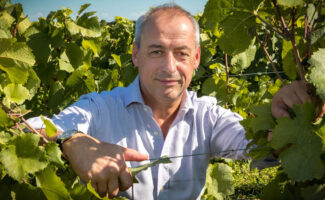
Albéric Bichot, Domaine Adélie
“Respect for the terroir and for nature is essential for us,” says Bichot. “We practice sustainable and organic viticulture. Starting with the 2018 vintage, the wines of Domaine Adélie will bear the certified ‘organic wine’ label.”
With this recognition comes a commitment to sustainable agriculture and a reverence for the uniqueness of each parcel and its stewardship. Despite the accolades, Albéric downplays the grandeur of his hallowed vineyards, preferring to talk about wine as a beverage to be enjoyed with friends, not over-analyzed or intellectualized.
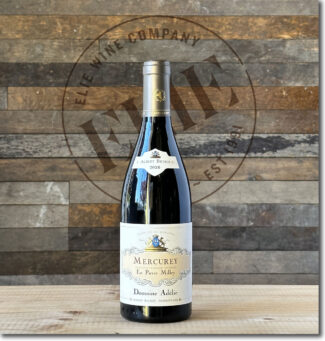 Domaine Adélie, 2020 Mercurey ‘en Pierre Milley’ Rouge ($58)
Domaine Adélie, 2020 Mercurey ‘en Pierre Milley’ Rouge ($58)
From a 5-acre lieu-dit where the vine age averages 35 years old, the soil is rich in clay above bedrock that consists of compacted limestone with a few areas that are predominantly marl. The nose shows forward fruit with notes of wild berries, plum and peach while the velvety and smooth with a long, nicely balanced finish.
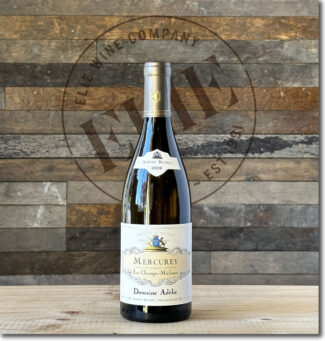 Domaine Adélie, 2020 Mercurey ‘Les Champs Michaux’ Blanc ($58)
Domaine Adélie, 2020 Mercurey ‘Les Champs Michaux’ Blanc ($58)
The lieu-dit ‘Les Champs Michaux’ is a three-acre site planted on calcareous clay where the Chardonnay vines, on average, are twenty years old. The wine is silken in the mouth with aromas of pears, green apples, peach and spring flowers. There is good depth and longevity with a persistent mineral finish.
NEW ARRIVAL
Burgundy’s Other White Grape
Aligoté Makes Its Case in Mercuery
“Aligoté!” sounds like a cry of triumph; something you’d shout after making a goal in the World Cup. In fact, perennially overshadowed by its sexier cousin Chardonnay and even its half-sister Pinot Gris (they share a father, Pinot Noir), there was a time when the opposite was true:
“Before phylloxera,” says Jérôme Castagnier, proprietor of Domaine Castagnier in Morey-Saint-Denis, “Aligoté was planted everywhere, literally. But after the outbreak abated, thanks primarily to American root stock, French growers took stock and realized that Chardonnay and Pinot Noir commanded higher market prices, so that’s what was re-planted. In fact, in some regions, Aligoté was banned altogether.”
Post-phylloxera Aligoté exists under the basic Bourgogne Aligoté appellation established in 1937 and, for the most part, produces inexpensive and simple wines, especially when planted in the less-valued soils of the Saône Valley flatlands. But true Aligoté fans, including Les Aligoteurs (a group of French producers and wine lovers who promote Burgundy’s all-but-forgotten white grape variety) believe that the grape better expresses the terroir of thinner, rockier, hillside soils. A cross between Pinot Noir and the ancient white varietal Gouais Blanc, Aligoté’s profile includes descriptors ranging from fruit-driven and floral to herbal and sharp with acidity. In either case, it is the essential base for the classic cocktail Kir when blended with Cassis.
The grape is on full display in Bouzeron in the Côte Chalonnaise, which is a region that draws more interest from America than it does in its native France. Pockets of Aligoté exist throughout Burgundy, often on the fringes of the priciest real estate. It often presents itself as an ‘every day’ wine, and let’s raise a toast to that, since we have more ‘every’ days than we do special occasions. “Aligoté!”
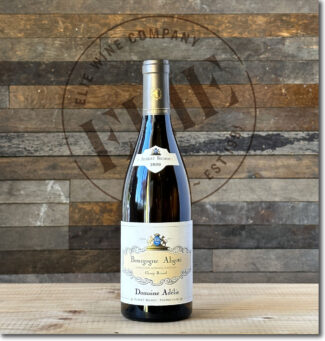 Domaine Adélie, 2020 ‘Champ Renard’ Bourgogne-Aligoté Blanc ($28)
Domaine Adélie, 2020 ‘Champ Renard’ Bourgogne-Aligoté Blanc ($28)
100% Aligoté grown in the Champ Renard” lieu-dit located at the entrance of the village of Mercurey; the vineyard is worked with the same organic spirit and vinified using the same, traditional methods as the Chardonnay. The wine is dry and perfumed, showing notes peach, citrus and acacia flowers.
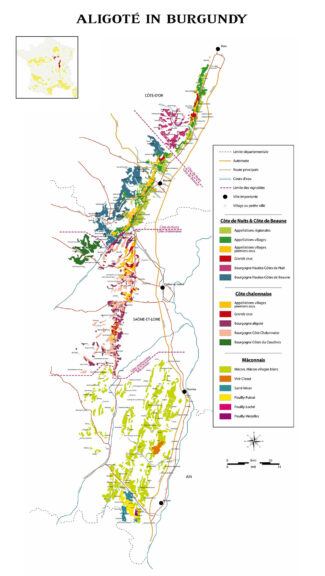
- - -
Posted on 2023.05.15 in Mercurey, France, Saturday Sips Wines, Wine-Aid Packages
Featured Wines
- Notebook: A’Boudt Town
- Saturday Sips Wines
- Saturday Sips Review Club
- The Champagne Society
- Wine-Aid Packages
Wine Regions
Grape Varieties
Aglianico, Albarino, Albarín Blanco, Albarín Tinto, Albillo, Aleatico, Arbanne, Aubun, Barbarossa, barbera, Beaune, Biancu Gentile, bourboulenc, Cabernet Franc, Cabernet Sauvignon, Caino, Caladoc, Calvi, Carcajolu-Neru, Carignan, Chablis, Chardonnay, Chasselas, Clairette, Corvina, Cot, Counoise, Erbamat, Ferrol, Fiano, Frappato, Friulano, Fromenteau, Fumin, Garnacha, Gewurztraminer, Godello, Graciano, Grenache, Grolleau, Groppello, Juan Garcia, Lambrusco, Loureira, Macabeo, Macabou, Malvasia, Malvasia Nera, Marsanne, Marselan, Marzemino, Melon de Bourgogne, Merlot, Mondeuse, Montanaccia, Montepulciano, Morescola, Morescono, Moscatell, Muscadelle, Muscat, Natural, Nero d'Avola, Parellada, Patrimonio, Petit Meslier, Petit Verdot, Pineau d'Aunis, Pinot Auxerrois, Pinot Blanc, Pinot Gris, Pinot Meunier, Pinot Noir, Poulsard, Prieto Picudo, Rondinella, Rousanne, Roussanne, Sangiovese, Sauvignon Blanc, Savignin, Semillon, Souson, Sparkling, Sumoll, Sylvaner, Syrah, Tannat, Tempranillo, Trebbiano, Trebbiano Valtenesi, Treixadura, Trousseau, Ugni Blanc, vaccarèse, Verdicchio, Vermentino, Viognier, Viura, Xarel-loWines & Events by Date
- April 2024
- March 2024
- February 2024
- January 2024
- December 2023
- November 2023
- October 2023
- September 2023
- August 2023
- July 2023
- June 2023
- May 2023
- April 2023
- March 2023
- February 2023
- January 2023
- December 2022
- November 2022
- October 2022
- September 2022
- August 2022
- July 2022
- June 2022
- May 2022
- April 2022
- March 2022
- February 2022
- January 2022
- December 2021
- November 2021
- October 2021
- September 2021
- August 2021
- July 2021
- June 2021
- May 2021
- April 2021
- March 2021
- February 2021
- January 2021
- December 2020
- November 2020
- October 2020
- September 2020
- August 2020
- July 2020
- June 2020
- May 2020
- April 2020
- March 2020
- February 2020
- January 2020
- December 2019
- November 2019
- October 2019
- September 2019
- August 2019
- July 2019
- June 2019
- May 2019
- April 2019
- March 2019
- February 2019
- January 2019
- December 2018
- November 2018
- October 2018
- September 2018
- August 2018
- July 2018
- June 2018
- May 2018
- April 2018
- March 2018
- February 2018
- January 2018
- December 2017
- November 2017
- October 2017
- September 2017
- August 2017
- July 2017
- June 2017
- May 2017
- April 2017
- March 2017
- February 2017
- January 2017
- December 2016
- November 2016
- October 2016
- September 2016
- August 2016
- July 2016
- June 2016
- May 2016
- April 2016
- March 2016
- February 2016
- January 2016
- December 2015
- November 2015
- October 2015
- September 2015
- August 2015
- July 2015
- June 2015
- May 2015
- April 2015
- March 2015
- February 2015
- January 2015
- December 2014
- November 2014
- October 2014
- September 2014
- August 2014
- July 2014
- June 2014
- April 2014
- March 2014
- February 2014
- January 2014
- December 2013
- November 2013
- October 2013
- September 2013
- August 2013
- July 2013
- June 2013
- May 2013
- April 2013
- March 2013
- February 2013
- January 2013
- December 2012
- November 2012
- October 2012
- February 2004
Search



